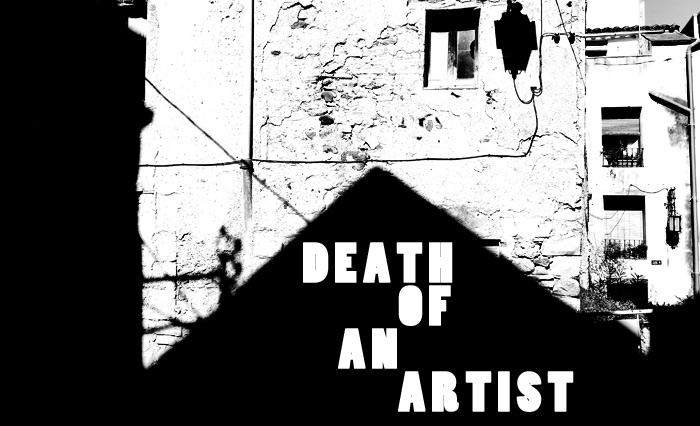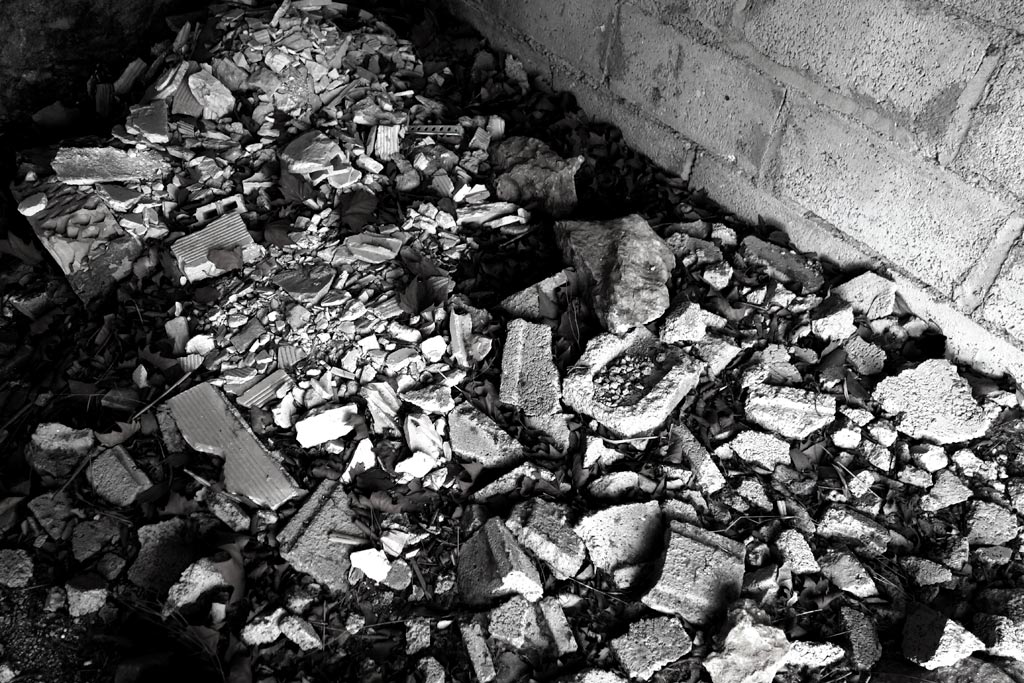
Death of an Artist
Summer, 1973; in the small village of Riba-Roja d’Ebre in Catalonia, Spain, the ephemeral surrealist figure known as ATOL is preparing to complete her most controversial work; ‘Desaparició eventual: acte d'esvair’ 1973, (‘Eventual disappearance - the act of fading away’.) It is the final work attributed to ATOL before her complete disappearance shortly afterward.
Born in 1928 to a bourgeois merchant family in the El Poble-Sec neighbourhood of Barcelona, Berthe Dolors Pallarès, (known later only by the nom de guerre ATOL,) would later come to describe her birthplace as “a street something like choice tobacco.” Her father Artur Pallarès, (a silk trader and pedagogue originally from the Pyreneen Empordà region to the north,) and mother Lluïsa, (of which little is known, other than she was born nearby on what came to be the family home on Carrer de Blasco de Garay,) appear as only minor figures in her life; the 1968 work ‘My mother, my father’ in which Pallarès - dressed as alter-ego ATOL - was documented in a sequence of photographs taken on her Kodak Instamatic camera in which she proceeded to erase all of the text from her birth certificate by carefully scraping the ink away with a scalpel. Such final, almost violent acts of erasure - or ‘gestures’, as she would call them - in which the artist is the subject of erasure, are characteristic of ATOL’s late performative works.
A precocious youth, Pallarès was influenced early on by the Catalan surrealists Cuixcart, Ponç, Brossa and others, before her impulsive departure for the Middle East at the age of twenty one. Having resolved early on that “Surrealism in the home is a wild panther in a cage”, Pallarès travelled initially to the Levant before her involvement with the Alexandrian group of surrealists in Egypt. It was in Alexandria that ATOL was born; in the anecdotal story of the incident, she and the painter Fouad Kamel were taking coffee in a downtown joint when suddenly, upon recognising an American friend, Kamel leapt up and exclaimed something that sounded to Pallarès something like ‘Atol’; the intense and unexpected pleasure experienced by Pallarès at that moment of mishearing, (in her words, “...an ecstatic smearing occurred; I became an island, a reef…”) which lead to her declaration that she would now only answer to this misheard name. This bold move to break free from the arbitrary associative power from the word-sound of her birth name would be her own Declaration of Independence; indeed, the political power of words and of languages, (and specifically, the act of naming,) would counterpoise the surreal interventions of ATOL in the late 1950’s and continue to appear as developed leitmotifs right up until her ‘eventual’ disappearance in 1973.
Not much is known about her period in Alexandria other than the book of photographic pieces, cut-up poems and watercolour sketches collected under the title ‘البروتوكولات / الأوامر’ (‘Protocols/Order-Words’) which appeared in a limited run of unbound chapbooks in December of 1957, and reached a limited circulation only after ATOL had already returned to Barcelona. The tone of the publication is confrontational and unpredictable - qualities manifest in the photographic series ‘Ya tienen asiento’, (titled after the engraving by Francisco Goya,) in which ATOL and an unidentified Egyptian woman friend are photographed in various situations around Alexandria - at a marketplace buying oranges, at a tobacconist reading La Vanguardia, on the street in front of the opera house or in any number of working-class and industrial districts, both women with a chair balanced on their heads. Naturally, the curious faces of passers-by caught in the photographs around the two women in this surreal posture become analogues to the faces/smears typically found in the Goya engravings - the great, terrible face of the crowd, the face of human interest. This important sequence of performative works were key to the development of the ‘Four short poems from four open windows’ printed on the opening page of the book and which are now considered the first mature works in the ATOL ouvre. Produced over the winter of 1955-1956, ATOL constructed poetry only from words either seen or heard from each of four open windows located around the city, (ostensibly at the homes of other surrealists.) From a first-storey hotel room in the downtown neighbourhood of Al Wardian, to a window overlooking an unnamed government building near the El Nabi Daniel Mosque, ATOL developed her poetics - her windows onto the world, so to speak - which would lead to the explosion of creative output in the Barcelona period of 1957-1963.
Returning to Barcelona in 1957 and heavily influenced by Debord’s contemporaneous writings on Unitary Urbanism, ATOL was engaged in the production of hypergraphs for the magazine ‘Set finestres, lleugerament obertes’ or ‘Seven windows, slightly open’ - a handmade publication totalling seven editions and produced in a very limited run by a group of drinking friends loosely connected to the Danish Lettrist International. Characteristically of this period, ATOL worked primarily with the city itself - the metropolis - as her medium, isolating urban territories within ‘islands’ detached from the flow of capital, charting interruptions and connections of desire. These map-making exercises, recorded in voluminous notebooks from the period, reveal an ecstatic ‘deception’ of the city through radical methods of dissociation and drifting, (as per the Situationist creed of psychogeography, inspired by the Benjaminian poetics of the ‘Arcades’ project of 1927-1940,) and her frequent attempts to ‘de-name’ the city, largely through ephemeral acts of midnight vandalism involving the clandestine ‘erasure’ of words in select locations, (i.e. carefully painting over the words on street signs to leave only meaningless numbers and symbols on a solid colour-field.) Through this kind of engagement with the urban melee, ATOL produced a huge archive of maps and mapping experiments which challenge - rather than describe - any shared sense of the place we collectively know as ‘Barcelona’, instead producing ‘versions’ of a place otherwise known as ‘Barcelona’; mere phantom copies, poor facsimiles designed to provoke, not satisfy, the human need for orientation.
Unlike other practitioners from surrealist groups with whom she came into contact, ATOL produced no manifestoes, no polemical diatribes and displayed no coherent set of political or ethical motivations for her artistic output, resisting affiliations to groups without a ‘surrealist character’ - for instance, the Trotskyist character of the Art et Liberté group or the Federation of International Revolutionary Art. Whether her instinct for reclusivity developed during her time in Barcelona or whether she had been a recluse even whilst living in the city, is a moot point; all we can say for certain is that the intense activity of urban exploration came to an end, and ATOL’s departure from Barcelona in 1963 to a set of undisclosed rural locations in provincial Catalonia form the basis of the final ‘campo’ period.
We would do well not to assume that ATOL’s shift to the provinces constituted an exhaustion with urban life or a retirement from full-time surrealism; an examination of works from the period of activity 1963-1973 reveals this nomadic rural period as a strategic shift of battlefield, as opposed to a retreat or calculated feint. During this time, publications would appear at seemingly random intervals throughout the territory of Lleida and Tarragona, and which could only be acquired through special contacts with whom ATOL occasionally associated; farmers, students, anarchists, and of course - other avant-garde artists. This small distribution network carried the handmade surrealist magazine ‘Gestos/Gestures’; produced in a run of only twenty copies of each of its ten annual editions, appearing sometimes in late July, sometimes earlier, and which documented in part her efforts to tease-out the irrational character of everyday objects and situations. Scholars now concur that both the distribution network and the works documented within the magazine were not arbitrary at all, and constitute a coherent battlefield consisting of discrete military units, engagements and reconnoitres, with especial emphasis on avant-garde units in the field. Take for instance Issue 3 (1966) in which ATOL issued instructions and prerogatives in the form of cut-up poems after the style of Tristan Tzara, to agents in the field she only assumed existed to receive them. Thanks to archivists associated with universities and private collections in Tarragona we can now view this material online. We can also see from the many prototypes and fragments of maps published in Gestos/Gestures that ATOL often used Ordinance Survey maps, metro maps, even ancient maps of Barcelona to navigate the rural countryside and its smaller villages and hamlets, to ends which now we may only speculate upon.
The mysterious and reclusive ‘campo’ period, nested within layers of complexity ranging from the many black and white photographic series of performance gestures, to oil paintings, small clay sculptures, poetry, and of course, the ubiquitous magazine all led to the notorious final gesture at Riba-Roja d’Ebre - ‘Desaparició eventual: acte d'esvair’ 1973, (‘Eventual disappearance - the act of fading away’) in which the artist, then aged 45, erased herself. In the sequence of 45 photographs that document the event, ATOL can be seen in the market square of the village, and with each progressive photograph, the artist grows a degree fainter, more transparent, until eventually she has left no trace whatsoever. From this point, it appeared that ATOL no longer existed. The artist, presumably still alive, was speculated to be living as a hermit somewhere in the wildernesses of the Aragonese hinterland, although one would be wise to exercise caution with talk of legends about artists, just the same way one does with the proverbial ‘fisherman’s tale’.
One final edition of ‘Set finestres, lleugerament obertes’ appeared late in 1982, but it is uncertain whether ATOL was the publisher. The edition, a folio of unbound xeroxed pages reproducing Polaroid photographs of various empty, unidentifiable spaces, was overlooked by the rapidly disappearing surrealist community and reached an extremely restricted run of just a dozen copies, a physical copy of which survives in the MACBA archive in Barcelona, but which can also be found online in the archive.
Hélène Concret
Professora de l’arte surrealista
Footnotes
1. The veracity of claims that this incident inspired the cypher idea for ‘Mr Kaplan’ - the non-character in Alfred Hitchcock’s 1959 movie ‘North by Northwest’ - is unknown. As ATOL would later write in the surrealist magazine ‘7 slightly open windows’ “...indeed, it is surreal to allow this narrative to circulate and have a life of its own; I might have given birth to it, but it has its own legs.”
2. Introduction to a Critique of Urban Geography, 1955 Guy Debord, first published in ‘Naked Lips’
3. Asger Jorn, (1914–1973), founder of the avant-garde group the International Movement for an Imaginist Bauhaus
Become a Patron of Daniel O'Reilly and support avant-garde literature


